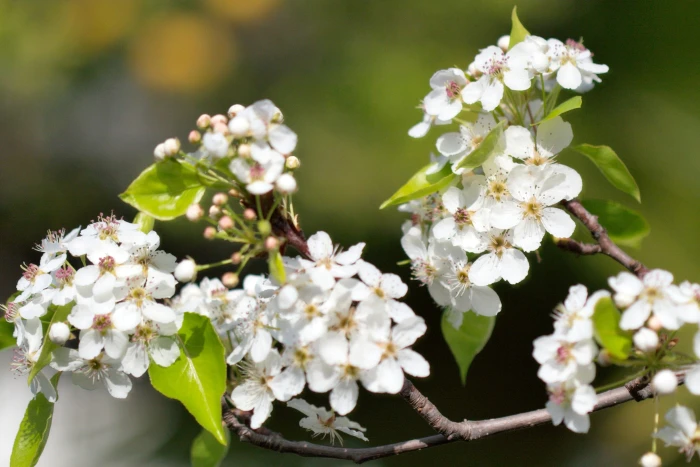Callery Pear
(Pyrus calleryana)
Callery Pear (Pyrus calleryana)
/
/

Matthew Field, http://www.photography.mattfield.com
CC BY 2.5








































































Estimated Native Range
Climate Requirements for Lowell, Massachusetts
| This Plant | Your Site | Plant Suitability for Your Location | ||
|---|---|---|---|---|
| • Precipitation | 1" - 340" | 45" | Aquatic | Aquatic |
| • High Temp. | 38°F - 105°F | 84°F | Your summer temperatures are normal for this plant. | Excellent |
| • Low Temp. | 4°F - 59°F | 14°F | Your winter temperatures are normal for this plant | Excellent |
Summary
The Callery Pear is valued for its aesthetic appeal, particularly its beautiful spring blossoms and vibrant fall foliage that can range from red to purple. It is commonly used in urban landscaping, as a street tree, and in residential gardens. While it is resistant to disease and fireblight, some cultivars like ’Bradford’ are prone to storm damage due to their rapid growth and weak wood. It thrives in full sun and adapts to a range of soil types, including those with varying drainage capabilities. However, its potential invasiveness should be considered before planting, as it can spread aggressively outside its native range.CC BY-SA 4.0
Plant Description
- Plant Type: Tree
- Height: 40-60 feet
- Width: 20-25 feet
- Growth Rate: Moderate
- Flower Color: White
- Flowering Season: Spring
- Leaf Retention: Deciduous
Growth Requirements
- Sun: Full Sun
- Water: Medium
- Drainage: Fast, Medium, Slow
Common Uses
Bee Garden, Bird Garden, Butterfly Garden, Deer Resistant, Drought Tolerant, Edible*Disclaimer: Easyscape's listed plant edibility is for informational use. Always verify the safety and proper identification of any plant before consumption., Fragrant, Salt Tolerant, Showy Flowers
Natural Habitat
Open woodlands and forest edges in East Asia and Southeast Asia
Other Names
Common Names: Bradford Pear , Litet Kinapäron , 豆梨 , Dou Li , Mame-Nashi
Scientific Names: Pyrus calleryana , Pyrus kawakamii , Pyrus dimorphophylla , Pyrus calleryana f. tomentella , Pyrus calleryana var. calleryana , Pyrus calleryana var. dimorphophylla , Pyrus calleryana f. graciliflora , Pyrus calleryana f. calleryana , Pyrus calleryana subsp. dimorphophylla , Pyrus mairei
GBIF Accepted Name: Pyrus calleryana Decne.